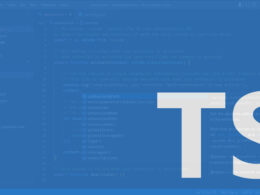In the relentless surge of innovation, technology usage statistics unfold a narrative of our times—a digital odyssey etched in every click, swipe, and connection. On a canvas where pixels meet purpose, these figures are not merely numbers; they embody the zeitgeist of a society intertwined with the digital realm.
Delving into this article paints a clearer picture: from global technology insights to the intricacies of device usage patterns, readers will gain clarity on how technology is shaping human interaction and enterprise.
Imagine unfurling the tapestry of data-driven decisions where adoption rates and tech market analysis go beyond the surface. This exploration isn’t just enlightening—it’s imperative.
For entrepreneurs, educators, and the eternally curious, illuminating insights await. By the final punctuation mark, readers will not only comprehend these stats but harness them to navigate the labyrinthine corridors of our technologically driven ecosystem.
- Digital trends meet reality.
- Internet penetration: deciphering digits.
- A glimpse into tomorrow with technology forecasts.
The Landscape of Digital Technology Today
Overview of Current Digital Technology Statistics
- The pace is relentless. The technology sector isn’t just growing; it’s accelerating. With projections suggesting global IT spending will hit a staggering $4.6 trillion by 2023, the message is clear: digital technology is expanding at an exponential rate.
- Dominating market share. Consider this: the tech industry now constitutes 35% of the global market. This isn’t just a large slice of the pie; it’s a lion’s share, indicating the sector’s critical role in driving economic engines worldwide.
- Data explosion. Here’s a fact to ponder: 90% of the world’s data has been generated in the last few years alone. This isn’t just growth; it’s a digital tsunami, reshaping every corner of our lives and work.
- Business transformation. With over 585,000 tech companies in the U.S. and the Big Four (Amazon, Apple, Google, Facebook) amassing a combined worth of $4 trillion, it’s evident that digital technology is the backbone of modern business.
General Technology Influence on Business and Society
- Workforce revolution. Technology jobs are multiplying, expected to grow at double the rate of other sectors by 2030. This isn’t just change; it’s a seismic shift in the labor market landscape.
- Cybersecurity at the forefront. In a digital age, security is paramount. With 84% of businesses identifying cybersecurity and resilience as their top priority, the focus has decisively shifted towards safeguarding digital assets.
Internet: The Global Connector
- Billions online. Over 5.35 billion active internet users represent more than half of the globe’s population. Asia leads this digital charge, accounting for over 50% of total internet traffic. This isn’t just connectivity; it’s a new realm of global interaction.
- Mobile dominance. The transition to mobile is undeniable, with 4.28 billion users accessing the web via mobile devices. This shift isn’t just a trend; it’s a complete overhaul of the internet landscape.
- Social media’s vast reach. With 5.04 billion active users on social platforms, social media has transcended being a mere communication tool; it’s now a fundamental part of the human experience.
- A connected nation. In the U.S., internet access has become nearly ubiquitous, with more than 90% of Americans online and 77% boasting broadband access at home. This isn’t just about connectivity; it’s about an entirely digital way of life.
Communications: From Voices to Data
- VoIP’s rise. The expected growth of the VoIP market to $145 billion by 2024 signals a major shift in communication preferences, from traditional telephony to internet-based calls.
- Smartphone ubiquity. The last decade has seen smartphone ownership in the U.S. increase by 50%, highlighting the device’s central role in modern communication strategies.
- eCommerce’s leap. Predictions suggest global online sales will constitute 22% of all retail sales by 2023, underscoring the ongoing digital transformation in consumer behavior and retail strategies.
Internet: The Backbone of the Digital Age
Internet Usage Statistics
- Massive Scale. As of now, over 5.1 billion people harness the power of the internet. Imagine: that’s 66.2% of the planet’s population woven into the digital tapestry. Asia, a titan in the arena, commands more than 50% of this traffic. It’s not just a network; it’s the network, the foundation of our digital existence.
- Mobile Reigns Supreme. The shift is palpable. With 4.28 billion individuals accessing the internet via mobile devices, the landscape is unequivocally mobile-first. This transformation is reshaping how we design, develop, and think about user interaction.
- Social Media: The New Town Square. In this digital era, 4.2 billion souls are active on social platforms, bridging distances and knitting a global community. This is more than a trend; it’s a fundamental shift in how we communicate, share, and live.
- Accessibility: A Right, Not a Privilege. In the U.S., internet access is nearly universal, with more than 90% penetration and 77% enjoying broadband at home. The digital divide narrows, yet the quest for universal access persists.
Social Media Dynamics
- TikTok’s Meteoric Rise. With 67% of teens engaged, TikTok has not just entered the arena; it has taken it by storm. It’s a vivid reminder: trends can shift, and today’s underdog can be tomorrow’s titan.
- The Fall of Giants. The landscape is relentless, unforgiving. Once-dominant Facebook sees its teen usage plummet from 71% to 32%. A stark reminder: in the digital age, staying still is falling behind.
- YouTube: The Universal Library. Used by 90% of teens, YouTube stands as a testament to the enduring appeal of video content. It’s not just a platform; it’s a cultural cornerstone, shaping knowledge, entertainment, and everything in between.
- The Digital Melting Pot. Platforms like Instagram and Snapchat boast usage by roughly 60% of teens, illustrating the diverse tapestry of digital engagement. These platforms are more than apps; they’re cultural landscapes, rich and varied.
Digital Technology in Personal Use
- Smartphones: The Digital Swiss Army Knife. Ownership in the U.S. has surged by 50% over the last decade, cementing smartphones as our lifeline to the digital world. It’s a tool, a companion, an extension of ourselves.
- Gaming: Beyond Play. With gaming consoles accessible to 80% of teens, gaming has transcended mere entertainment. It’s a community, a culture, a digital homeland for millions.
Digital Technology in Professional Settings
- The New Business Normal. With the tech industry forecasted to grow at a CAGR of 5% through 2024, digital tools are not just advantageous; they’re indispensable. It’s a digital arms race, and agility is the name of the game.
- Cloud Computing’s Ascendancy. Expected to grow at a CAGR of 17.5% by 2025, cloud computing is redefining infrastructure, scalability, and flexibility. It’s not just an option; it’s the foundation of modern computing. We have an article about cloud computing statistics, if you want to look into that.
Digital Technology in Personal Use
Smartphones and Portable Devices
- Ubiquity is the Name of the Game.
Smartphone ownership has skyrocketed. Reflect on this: in the U.S., the last decade witnessed a 50% jump. That’s not merely growth; it’s a revolution. Smartphones have morphed into our portals to the digital realm, gateways to infinite information, communication, and entertainment. - Tablets and Beyond.
Consider the trajectory: global tablet shipments are poised to hit 142 million by 2025. This isn’t just about having another screen; it’s about versatility, about devices that blend the line between work and play, offering a canvas for creativity and a window to the world.
Gaming and Entertainment
- The Console Culture.
With 80% of teens having access to gaming consoles, gaming has established itself as a cornerstone of digital leisure. It’s a blend of art, storytelling, and interactive experience that transcends age and demographics. - Streaming and Subscriptions.
The narrative is clear: digital entertainment is king. Streaming services have become the norm, phasing out traditional media consumption. It’s a world where content is perpetually at our fingertips, tailored to our tastes, preferences, and schedules.
Content Creation and Consumption
- Creators in the Digital Age.
The internet has democratized content creation. Platforms like YouTube, TikTok, and Instagram have given rise to a new generation of creators, turning hobbies into careers and followers into communities. This isn’t just about making videos; it’s about crafting digital identities and narratives. - The Reading Revolution.
E-books and digital libraries have transformed how we consume literature. With over 110,000 full-text titles available in e-books, accessibility and variety have never been greater. This revolution has made reading a seamless part of modern life, allowing stories and knowledge to be more accessible than ever.
Digital Learning and Self-Improvement
- Online Courses and Knowledge Sharing.
The pursuit of knowledge has been fundamentally changed. Online platforms offer courses on everything from coding to cooking, making learning a lifelong journey that fits into our schedules. It’s about empowerment, about breaking barriers to education and skills development. - Health and Fitness Apps.
Digital technology isn’t just shaping our minds; it’s sculpting our bodies. Health and fitness apps have turned our smartphones into personal trainers, nutritionists, and wellness coaches. They track, guide, and motivate, making health a daily, integrated part of our digital lives.
Digital Technology in Professional Settings
The Tech-Driven Business Environment
- Growth Unleashed.
The tech industry, poised to grow at a CAGR of 5% through 2024, signifies more than expansion. It embodies the relentless push towards innovation, driving every sector, every business, and every professional to adapt or be left behind. - Cloud Computing’s Ascendancy.
With growth expected at a CAGR of 17.5% by 2025, cloud computing has transitioned from an emerging technology to the backbone of the modern enterprise. It’s not just about storage; it’s about flexibility, scalability, and a new paradigm in IT infrastructure. - Cybersecurity: No Longer an Afterthought.
In a world where 84% of businesses rank cybersecurity and resilience as a top priority, the message is clear: safeguarding digital assets is paramount. This isn’t just about protecting data; it’s about securing trust in an increasingly digital world.
Data and Analytics: The Competitive Edge
- Big Data: The New Oil.
In an era where 90% of the world’s data was generated in recent years, big data analytics has become the cornerstone of strategic decision-making. It’s not just about having information; it’s about deriving actionable insights that drive growth and innovation. - Artificial Intelligence and Machine Learning.
With AI expected to contribute $15.7 trillion to the global economy by 2030, its integration into business processes is not just inevitable; it’s already happening. From automating mundane tasks to providing deep insights, AI and ML are redefining efficiency and effectiveness.
E-Commerce and Digital Marketing
- Online Sales: The Sky’s the Limit.
With global online sales projected to account for 22% of all retail sales by 2023, e-commerce isn’t just a channel; it’s become the mainstay of the retail industry. The digital storefront is now just as important, if not more so, than the physical one. - Digital Advertising: Connecting Brands with Consumers.
Digital ad spending, hitting $261.1 billion in 2022 and expected to reach $440.3 billion by 2027, underscores the shift in how brands engage with their audience. It’s not just about reaching consumers; it’s about engaging them, understanding them, and building relationships in the digital realm.
E-Commerce and Online Marketplaces
Global Online Sales: The Digital Marketplace Expands
- An Unstoppable Tide.
Global online sales are not just increasing; they are predicted to capture 22% of all retail sales by 2023. This isn’t merely growth; it’s a seismic shift in consumer behavior, an embrace of the digital over the physical, a new norm. - Trillion-Dollar Trajectory.
E-commerce is on a path to reach $6.54 trillion globally by 2023. It’s not just a marketplace; it’s a vast, borderless economy, burgeoning at a pace that redefines ‘rapid’. - Digital Ad Spending: The Wind Beneath E-Commerce’s Wings.
With a leap to $261.1 billion in 2022, projected to soar to $440.3 billion by 2027, digital ad spending is the engine driving the e-commerce boom. This isn’t just advertising; it’s the art of capturing attention in the digital age, a strategic dance in the crowded online space.
Consumer Behavior: Navigating the Digital Shopping Experience
- Direct to Marketplace.
A significant 48% of online shoppers bypass search engines, heading straight to large e-commerce marketplaces. This isn’t just a habit; it’s a testament to the trust and convenience these platforms have cultivated, a direct pipeline to consumer desire. - Online Marketplaces: The New Main Street.
CompTIA research reveals that 71% of companies reported increased usage of online marketplaces. This isn’t just a trend; it’s a migration, a collective move towards the digital ‘Main Street’, where the world shops, sells, and connects.
The Evolution of Consumer Engagement
- Data-Driven Decisions.
In an environment where nearly all data has been generated in just a few years, e-commerce isn’t just selling; it’s understanding, predicting, personalizing. It’s not about the transaction; it’s about the relationship, built on data, delivered digitally. - The Personal Touch, Digitally Delivered.
In a world where digital ad spend is hitting new heights, the challenge isn’t just to reach the consumer; it’s to resonate, to communicate in the language of clicks and swipes, to engage with relevance and precision. This isn’t just marketing; it’s digital empathy, a connection forged in bytes.
Technology Accessibility and Usage
Access to Digital Devices
- Smartphones: The Universal Key.
In the digital saga, smartphones have emerged as non-negotiables. With ownership in the U.S. climbing by 50% over the last decade, they’ve become our lifelines to the digital universe. They’re not just devices; they’re extensions of our personal and professional lives. - Tablets and Wearables: The New Frontiers.
Tablet shipments are on track to hit 142 million by 2025, while wearables are forecasted to reach 489.1 million devices by 2023. This isn’t just diversification; it’s a broadening of the digital ecosystem, expanding the ways we interact with technology in our daily lives.
Gaming Consoles and Entertainment Systems
- Beyond Play: A Cultural Shift.
80% of teens now have access to gaming consoles. This marks a shift not just in entertainment, but in social interaction and cultural consumption. Gaming has transcended mere hobby status; it’s become a primary form of engagement and connection.
Internet and Social Media Use Patterns
- The Digital Divide Narrows.
With over 90% of Americans having internet access and 77% enjoying broadband at home, the digital divide is closing. Yet, disparities remain, reflecting broader societal divisions. This isn’t just about connectivity; it’s about equity in the digital age. - A Social Sphere Dominated by Video and Image Sharing.
Platforms like YouTube, Instagram, and TikTok have redefined engagement, with visual content reigning supreme. This isn’t just a shift in preference; it’s a transformation in how we communicate, share, and perceive the world around us.
Digital Learning and Online Education
- The Rise of E-Learning.
The last few years have witnessed a seismic shift in how knowledge is acquired. Online platforms offer an unprecedented array of learning opportunities, making education more accessible than ever. This isn’t just about convenience; it’s about democratizing knowledge.
Mobile and Wearable Technology
Smartphones: The Epicenter of Digital Evolution
- The Surge of Smart Devices.
Picture this: an expected 18.22 billion mobile devices globally by 2025. Each one, a gateway to infinite realms of information, connection, and innovation. This isn’t merely a statistic; it’s a testament to the smartphone’s pivotal role in shaping our digital interactions. - The Smartphone Expansion.
Consider the growth: a CAGR of 16.4%. It’s not just about the devices themselves but about what they enable. Every app, every notification, every swipe is a thread in the larger fabric of our connected existence.
Tablets: Versatile Companions in a Digital World
- Rising Shipments, Rising Impact.
With global tablet shipments projected to reach 142 million by 2025, the narrative is clear. Tablets have carved out a niche that balances portability with functionality, proving indispensable for professionals and creatives alike.
Wearable Tech: Fashion Meets Functionality
- A Wearable Wave.
Forecasted to reach 489.1 million devices by 2023, wearable technology blurs the lines between fashion, fitness, and digital functionality. It’s a fusion of design and utility, tracking our health metrics while keeping us stylishly connected. - The Health Revolution on Your Wrist.
Imagine the potential: nearly half a billion devices dedicated to enhancing wellness, monitoring vitals, and nudging us towards healthier habits. This isn’t just wearable technology; it’s a personal health revolution, one step, one beat, one notification at a time.
The Mobile Ecosystem: Apps and Accessibility
- Apps: The Building Blocks of Digital Experience.
Each app represents a portal to new experiences, services, and communities. The ecosystem thrives on innovation, with developers continuously pushing the boundaries of what’s possible in the palm of your hand. - Accessibility: Bridging Digital Divides.
As mobile technology becomes increasingly integral to daily life, ensuring these devices and their applications are accessible to all is paramount. It’s not just about creating technology; it’s about crafting inclusive gateways to the digital world.
Connectivity: The Pulse of Modern Life
- Uninterrupted Connectivity.
In a world where being online is as natural as breathing, mobile and wearable technologies stand as the pillars of our digital identities. They keep us connected, informed, and engaged, no matter where we are in the world. - The Internet of Things (IoT): A Connected Universe.
With projections of 30.9 billion IoT devices by 2025, our mobile and wearable devices are not just tools but nodes in a vast, interconnected network. They’re the conduits through which the physical and digital worlds converse, creating a tapestry of interconnected experiences that define the rhythm of modern life.
Artificial Intelligence and Machine Learning
The Economic Vanguard of AI
- A Monumental Contribution.
Picture AI as a colossal engine driving forward, projected to inject $15.7 trillion into the global economy by 2030. This isn’t just a number; it’s a revolution, marking AI as not merely an innovation but a fundamental economic force. - The Fabric of Future Markets.
Imagine industries transforming under the influence of AI, with efficiency and market shares doubling for firms that have embraced this technology. It’s not speculation; it’s the impending reality of the digital marketplace.
Machine Learning: Decoding the World
- Exponential Growth on the Horizon.
The machine learning market, on a trajectory to hit $152.24 billion by 2028, reflects more than growth—it signifies a paradigm shift in how data is interpreted, decisions are made, and insights are garnered. - Voice Assistants: The Tip of the Iceberg.
With 8.4 billion voice assistants powered by machine learning expected by 2024, we’re not just talking about convenience; we’re witnessing a transformation in human-computer interaction, a new dialogue woven into the fabric of daily life.
FAQ On Technology Usage Statistics
How has technology usage evolved over the past decade?
Technology took leaps, not steps. Everyone’s a digital native now. Smartphones became body appendages. Homes got smarter. Clouds grew bigger than the sky—data everywhere. The canvas of digitalization expanded from business to bedtime stories. It’s been less of a curve and more of an exponential skydive.
What are the most significant technology adoption rates to consider?
Adoption rates for mobile devices overshadowed others. Then the Internet of Things sprouted in every home. Artificial intelligence became the new electricity. Big data’s no longer a big word, but a massive reality. Each rate tells a story of innovation, saturation, and sometimes, the need for tech detox.
What do technology usage statistics reveal about different demographics?
Surprisingly—or maybe not—age gaps are closing in. Seniors tweet, toddlers swipe before they speak. Regionally though, the divide remains wide; broadband’s still a luxury in some places. But the general trajectory? An ascending one. Technology’s becoming the universal language, spoken across all ages and places.
Which industries are most impacted by technology usage statistics?
Tech-driven economy stats shout loudest in e-commerce, finance, and health, where telemedicine’s a thing. Education’s teaching through screens. Transportation? Self-driving cars aren’t sci-fi. Tech stats are not just altering industries; they’re reinventing them. From how we shop to how we heal—there’s an algorithm silently scripting these revolutions.
How do technology usage rates affect consumer behavior?
Tech’s the new heartbeat of consumerism. Online behavior analysis shows us an addiction to convenience. People shop, dine, even date by swiping. Brand loyalty’s being redefined—online reviews are the new whispered recommendations over backyard fences. Tech usage has consumers riding a carousel of ever-evolving digital experiences, craving the next spin.
What is the role of mobile devices in current technology usage statistics?
Mobile devices are now the maestros of our digital symphony—constantly conducting how we work, play, and connect. Screen sizes shrink but mobile usage balloons, with apps for every action and emotion. Phones are no longer just phones; they’re lifelines to a digitized existence.
How reliable are technology usage reports?
Reputation matters. Sources like the International Telecommunication Union, Gartner, and Pew Research Center bring the gravitas of thorough research. Yet, there’s always a margin for error—surveys miss corners, and big data can still overlook the little guy. Scrutinize sources, understand methodologies, and take statistics with a grain of Silicon Valley salt.
Can technology usage predict future trends?
Absolutely. Track the charts and you’ll see tomorrow’s headlines. Forecasting isn’t guessing; it’s informed prediction. Dive into Big Data, and patterns emerge as clear as code on a screen. From AI adoption trajectories to wearable tech stats, these numbers are the crystal balls of our plugged-in world.
What is the impact of technology usage on education?
Classrooms live in the cloud now. Textbooks turned into tablets, and tech market analysis indicates this is no fad. From rural schools to prestigious universities, learning’s a login away. Statistics show improved accessibility but also a digital chasm—tech’s as much a tool as it is a challenge for equity.
How has the pandemic influenced technology usage statistics?
A virus sent everyone home, and technology opened its doors wider. Remote work, Zoom birthdays, telehealth appointments—screens became our windows to the outside world. E-commerce and digital platforms saw a spike like never before. What was necessity may now be trending towards normalcy. It rewrote the code of daily life.
Conclusion
As the sun sets on this digital narrative, the technology usage statistics we’ve journeyed through aren’t just cold, hard numbers. They’re a testament to an evolving civilization—one where screens illuminate faces and innovation is relentless. But amidst the dazzle, balance whispers a word of caution.
- Embrace the speed; don’t become its captive.
- Foster connectivity, but not at the expense of human touch.
- Innovate fiercely, but tether it to wisdom.
Today’s tapestry of adoption rates and digital trends reveals a future both promising and enigmatic. Behind every gigabyte and gadget is the pulse of human intent, shaping resources and realities. What we’ve unpacked here—these insights—aren’t merely for pondering; they’re breadcrumbs for strategists, educators, and creators to forge pathways to a technologically harmonious tomorrow.
Hold these stats like a compass; they point toward horizons ripe for those ready to venture beyond the binary.
- Professional Video Editing with Apps Like Kinemaster - April 29, 2024
- Benefits of Working with a Professional Web Development Company For Your Website - April 29, 2024
- What’s Odoo ERP And How To Integrate It - April 29, 2024









